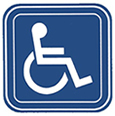Acronyms are very present in our daily lives.
In our daily life we live with so many small letters that, although small, mean a lot, isn't it true?
Who has never heard some phrases similar to:
Lend me your CPF.
What is your street zip code?
I need to withdraw my FGTS.
We are talking about the acronyms, about which, according to the definition attributed to them, we can thus state:
Acronym is a kind of abbreviation formed by initials or first syllables of the words of a expression that represents the name of a commercial, industrial, administrative or sports.
The acronyms can be classified into:
* Unpronounceable, which are those that do not form a word, as they are pronounced letter by letter. They are usually written in capital letters. As shown in the examples: RG (General Registry, also known as portfolio of identity), CPF (Registration of Individuals), FGTS (Guarantee Fund for Length of Service), among others.
* Pronounceable - are those that form a word and can be perfectly pronounced. Thus, they are written like this:
# With capital letters, if each letter of the acronym corresponds to a certain word. Like for example:
CEP - Postal Address Code
PIS - Social Integration Program
NATO – Atlantic Treaty Organization
OPEC – Organization of Petroleum Exporting Countries
# The first letter capitalized and the others lowercase if each letter of the acronym does not necessarily correspond to a word. Watch:
Unicamp – University of Campinas
Sudene – Northeast Development Superintendence
In order to be experts on the subject, how about getting to know a few more and what they represent?

BNH - National Housing Bank
CNH - National Driver's License
CTA - Aeronautics Technological Center
CUT – Single Workers Center
Area code - Direct dialing at a distance
FAB – Brazilian Air Force
Funai – National Indian Foundation
GDP - Gross Domestic Product
TRE - Regional Electoral Court
TRU - Single Road Fee
USP – University of São Paulo
As well as these, there are many others.
By Vânia Duarte
Graduated in Letters
Kids School Team


